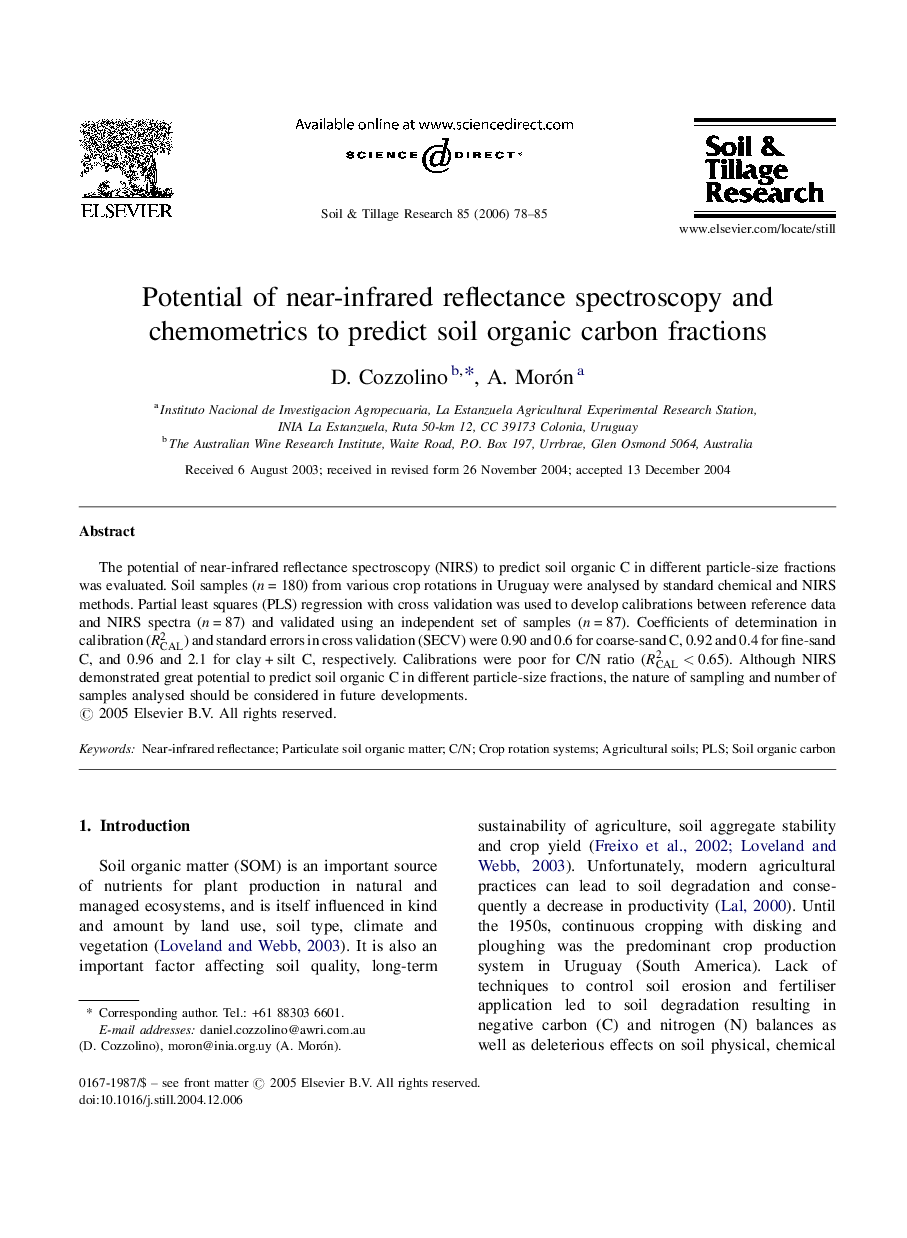| Article ID | Journal | Published Year | Pages | File Type |
|---|---|---|---|---|
| 306925 | Soil and Tillage Research | 2006 | 8 Pages |
The potential of near-infrared reflectance spectroscopy (NIRS) to predict soil organic C in different particle-size fractions was evaluated. Soil samples (n = 180) from various crop rotations in Uruguay were analysed by standard chemical and NIRS methods. Partial least squares (PLS) regression with cross validation was used to develop calibrations between reference data and NIRS spectra (n = 87) and validated using an independent set of samples (n = 87). Coefficients of determination in calibration (RCAL2) and standard errors in cross validation (SECV) were 0.90 and 0.6 for coarse-sand C, 0.92 and 0.4 for fine-sand C, and 0.96 and 2.1 for clay + silt C, respectively. Calibrations were poor for C/N ratio (RCAL2 < 0.65). Although NIRS demonstrated great potential to predict soil organic C in different particle-size fractions, the nature of sampling and number of samples analysed should be considered in future developments.
